The iconic long, silky coat of a Maltese gives these dogs an aristocratic look. Ivory in color, their coats drape over their bodies without curls and are free from an undercoat. Considered hypoallergenic, Maltese don’t shed very much, and with regular grooming, they are an ideal breed for allergy sufferers. While their glossy coats make them stand out, it is important to maintain proper grooming habits. Check out this Maltese grooming guide with five tips for a healthy and beautiful coat.
About the Maltese Breed
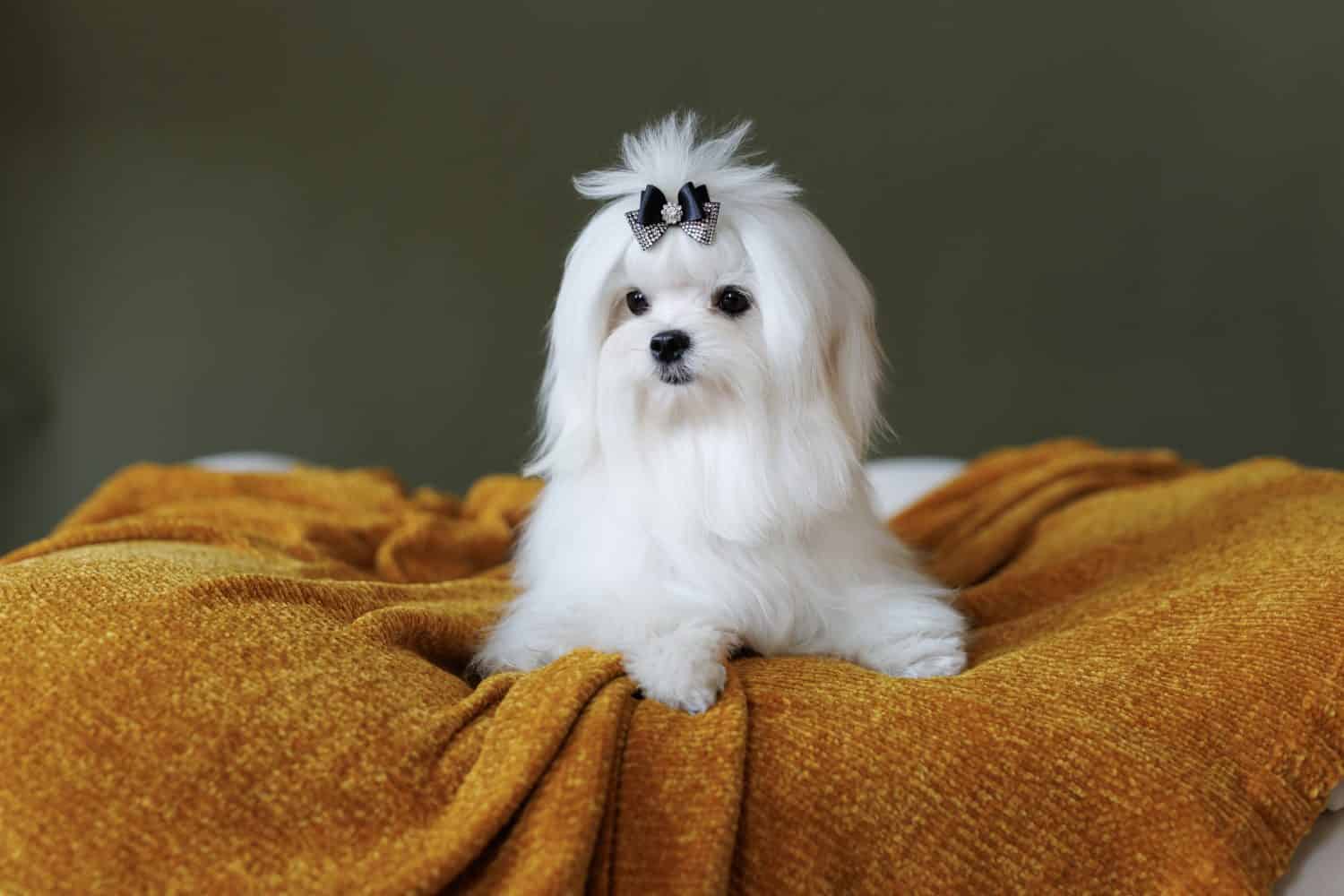
Maltese are thought to have originated from the island of Malta more than 2,500 years ago.
©KDdesignphoto/Shutterstock.com
The exact origins of the Maltese are a mystery, but it is believed to have originated thousands of years ago in the Mediterranean. Most historians point to Malta, where the Maltese breed was developed. These dogs have been favored by royalty and the upper class.
Maltese are very affectionate companions and intelligent dogs. They make great family pets as they are good with kids and get along well with other dogs. Usually weighing less than seven pounds, they are recognized by the straight, silky mantle that flows over their tiny frames. They are low-shedding with lifespans of typically 12 to 15 years. All in all, they make adorable little pets perfect for an apartment or small housing.
#1 Brush Fur Daily
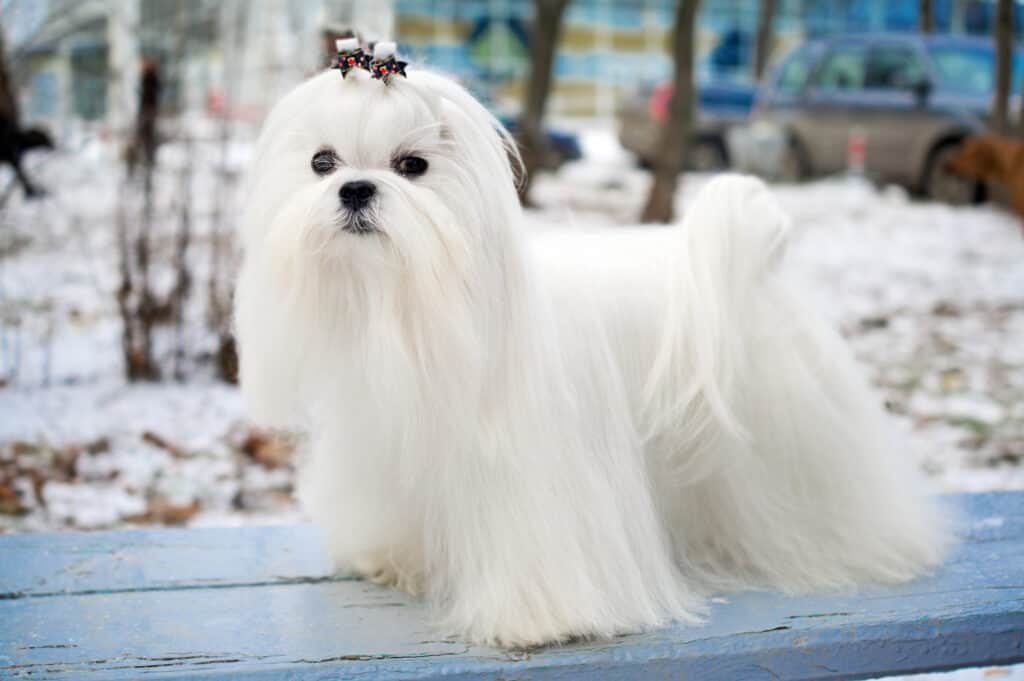
The best brushes for grooming your Maltese are metal combs, slicker brushes, or pin brushes.
©iStock.com/Laures
To keep that silky fur healthy and free of mats, it is important to have beneficial brushing routines. Dogs with fine or curly fur are prone to matting—when the fur becomes tangled and knotted around itself. Mats cause extreme discomfort for your dog and lead to skin irritation or infection. Here are some brush options for your dog:
- Metal comb– A metal comb is ideal to help reduce shedding. It is also one of the best tools to brush your dog when its fur is wet. Plus, metal combs can comb areas a normal brush can’t quite reach.
- Slicker brush– A slicker brush is beneficial because it works with all coat types. So, if you have other breeds besides your Maltese, a slicker brush will work with them all. The head of the brush is usually flat or curved and is fitted with rows of thin wire pins. These help remove loose fur and are an effective detangler.
- Pin brush– Similar to a slicker brush, however, the pins on this brush are tipped with plastic or rubber for a gentler brushing experience. A pin brush is perfect for long coats. However, it is less effective at detangling.
How to Best Brush Your Maltese
Before you brush, spray your Maltese with detangling spray. This will cut down on your brushing time while simultaneously conditioning the fur. Plus, it gives you and your dog a gentler brushing experience. As you brush, lift the top layer and brush the hair closest to the skin. Then, work your way down, brushing the rest of the outer layer.
For Maltese with short coats, you should brush them every three days. With medium coats, you will need to brush every other day. But daily brushing is required for dogs with long show coats to keep them tangle-free and smooth.
Brushing is the first and most crucial aspect of your Maltese grooming guide.
#2 Dealing With Matted Hair
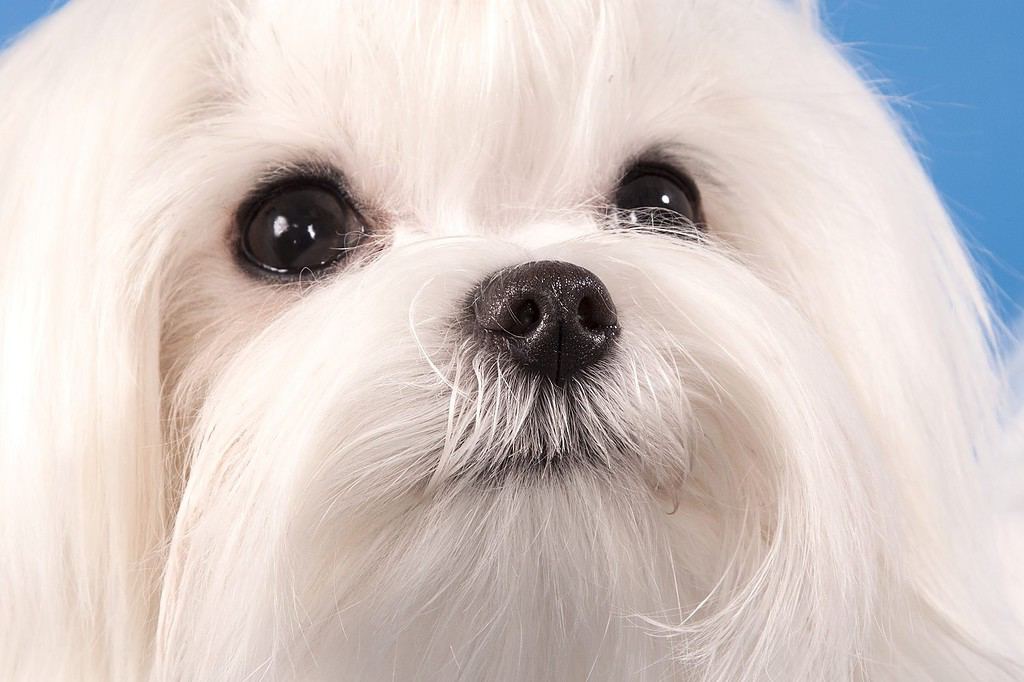
Mats occur when your Maltese’s fur tangles and wraps around itself. Then, tight clumps of loose, dead fur get stuck to live fur, forming mats.
©Jolanta Beinarovica/Shutterstock.com
When you come across a mat in your dog’s fur, first try to work it out with your fingers. Don’t wet it down, as this makes it harder to detangle the fur. If this fails, try applying a detangler to smooth the knotted fur. Then, take a small comb and gently loosen the hairs.
If the mat is still unyielding, you must cut it out. Using scissors, cut small snips into the mat and remove them gradually. Otherwise, if the mat is dense enough, it is best to take your dog to a groomer who is trained to remove mats.
#3 Best Ways to Bathe Your Maltese
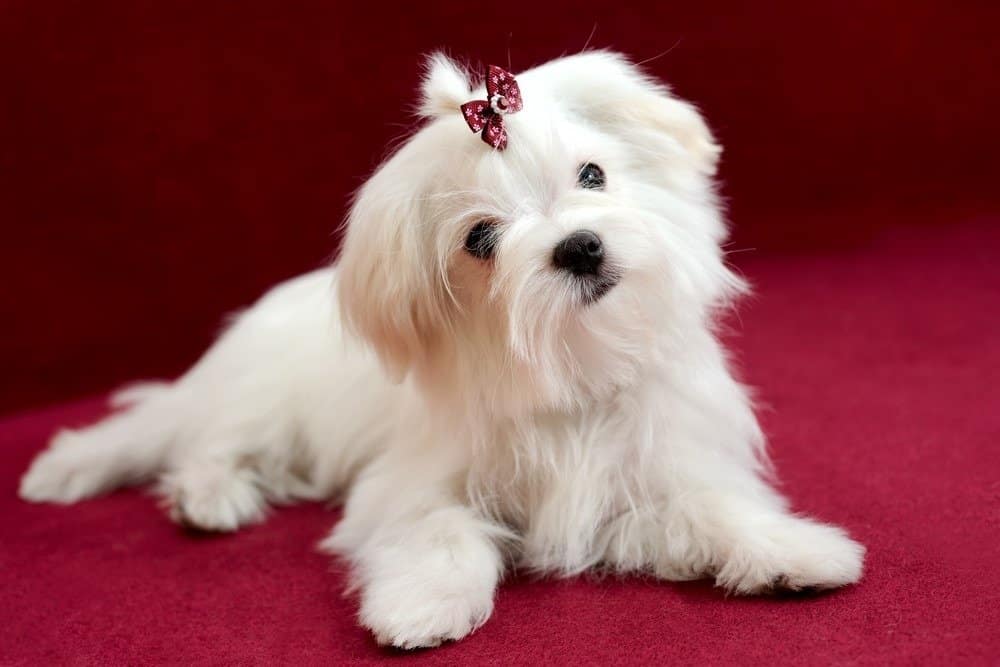
You do not want to bathe your Maltese too often, as it will strip the body of the natural oils that keep the skin moisturized.
©Arthur Lookyanov/Shutterstock.com
Whereas humans shower almost daily, you do not want such a regimented bathing schedule for your Maltese. Your dog’s natural oils protect the skin and keep the coat moisturized. Bathing too often strips these oils, causing itchy skin and dry hair. Aim to bathe your Maltese once every two weeks unless your dog gets especially messy in between, then bathe as necessary.
Many find bathing your Maltese in a kitchen skin preferable to the tub. Using a clean sink with a non-slip mat, fill the sink with a few inches of lukewarm water. Then, bring your dog to the sink and wet the hair using either the spray nozzle or a cup. Take care not to get water in your dog’s ears or eyes.
Once wet, apply quality shampoo to the back and work it through the entire coat. Gently rinse the shampoo and then apply the conditioner. Once the conditioner is rinsed, wrap your Maltese in a towel and thoroughly dry the coat.
Brushing your dog after the bath is crucial to maintaining a healthy coat. With a metal comb, brush your dog’s entire body. To finish, apply leave-in coat spray to smooth your dog’s hair, detangle it, and prevent matting.
#4 Daily Eye Wiping
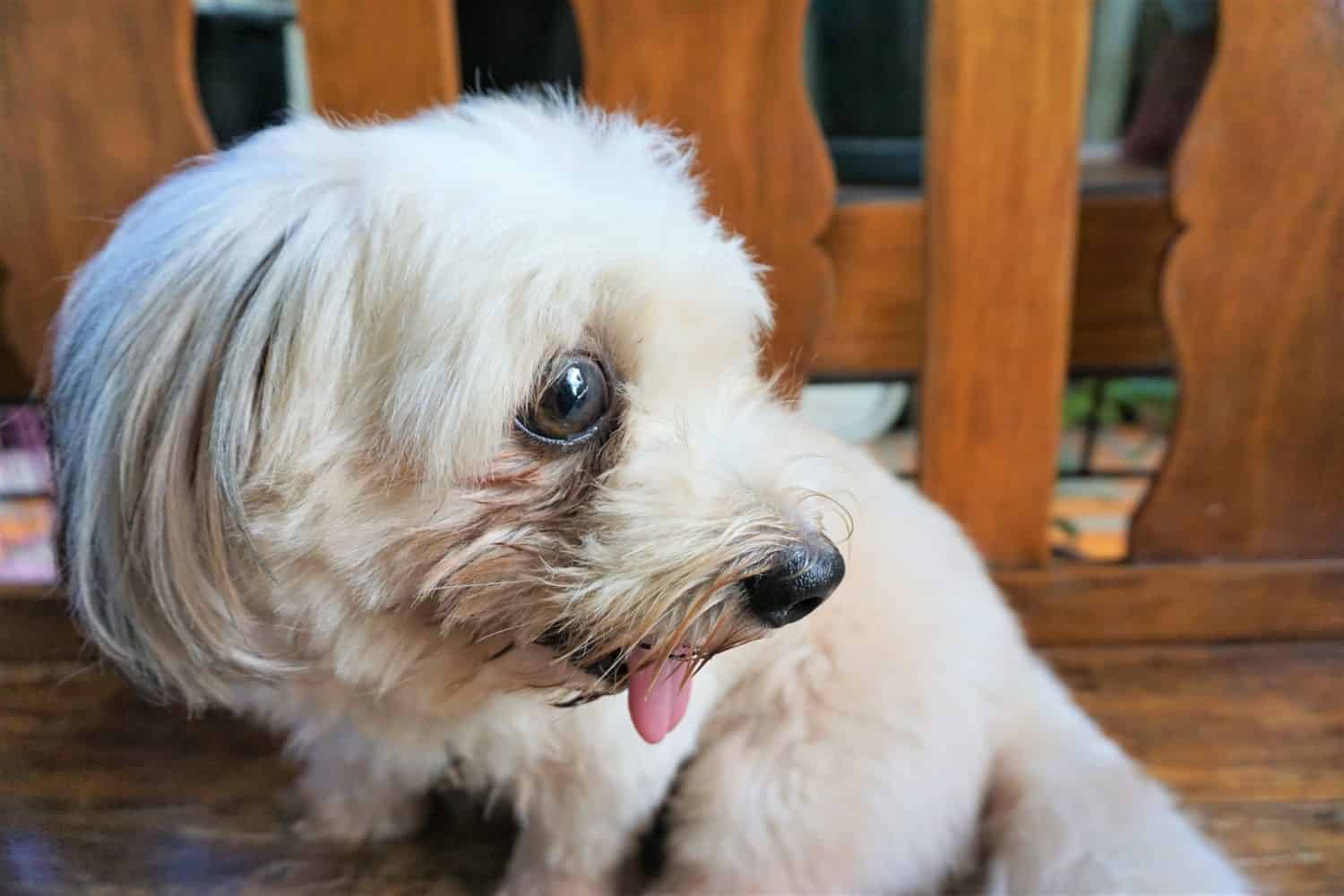
Maltese are susceptible to tear staining. This reddish-brown staining is caused by an iron-containing dye molecule called porphyrin.
©Jill Gulles/Shutterstock.com
While Maltese have beautiful ivory coats, they are prone to tear staining. Daily wiping of the eyes will help prevent that. To do this, wet a cotton ball or washcloth with warm water. Starting at the corner of the eye, gently massage the area to break up any matter crusted there. Then, wipe down and away from the eye. Make sure to use a new cotton ball or clean area of the washcloth for each eye.
Alternatively, you may purchase eye wash pads for your Maltese. Some find the ingredients in the pads, like boric acid, to be highly effective for cleaning eye staining.
If you notice any stubborn matter dried below your dog’s eyes, you can try this. Dip a toothbrush in warm water and gently scrub it away from your dog’s eyes. Or, using a fine-toothed comb, carefully comb away the offending clump.
#5 Tear Stain Remover
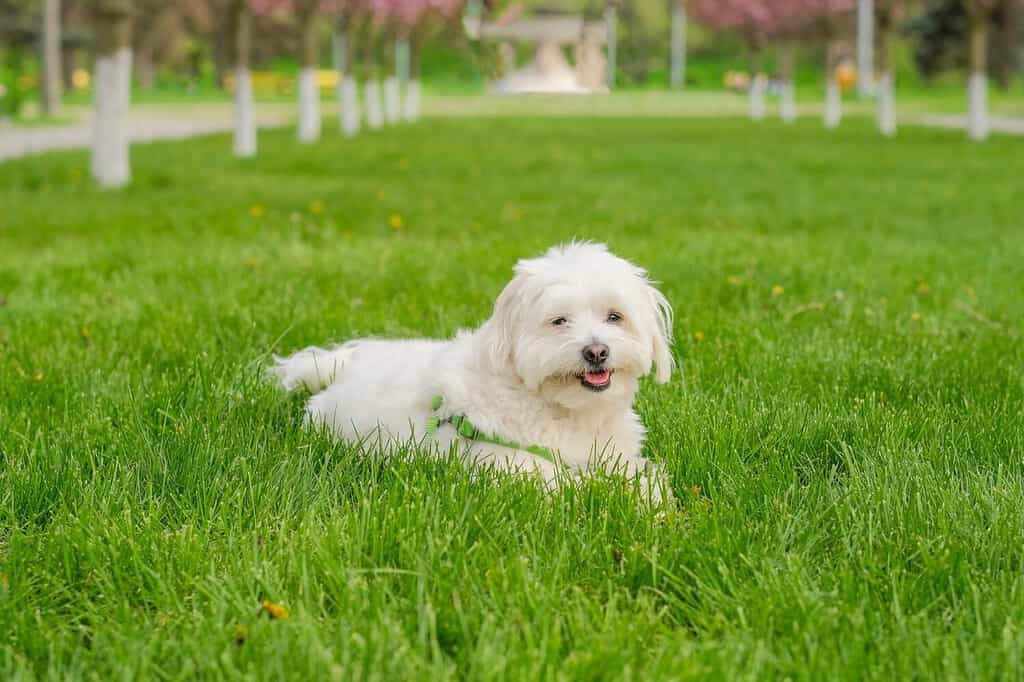
Prophyrin, which causes tear-staining, is excreted from your dog’s body through bile, saliva, urine, and tears.
©Carnivorka/Shutterstock.com
The reddish-brown staining under your dog’s eyes is from an iron-containing dye molecule called porphyrin. It is produced as the body is breaking down iron. Usually, your dog’s body gets rid of porphyrin through the gastrointestinal tract, saliva, urine, or tears. The porphyrin stains the fur as tears settle at the corners of the eyes.
The formulated tear stain removers remove debris and stains from your Maltese’s gorgeous ivory face. Not only do tear stain removers brighten the fur, but they help prevent mucus and tear buildup. It is a helpful product in maintaining eye health for your Maltese.
Final Thoughts
As you form a healthy grooming routine, it will become easier and easier to keep your Maltese’s coat healthy and beautiful. However, many fantastic professional groomers can step in if your circumstances don’t allow time for a comprehensive Maltese grooming routine. No matter what route you choose, your dog’s health and comfort are most important.
The photo featured at the top of this post is © iStock.com/Foto-front
Ready to discover the top 10 cutest dog breeds in the entire world?
How about the fastest dogs, the largest dogs and those that are -- quite frankly -- just the kindest dogs on the planet? Each day, AZ Animals sends out lists just like this to our thousands of email subscribers. And the best part? It's FREE. Join today by entering your email below.
Thank you for reading! Have some feedback for us? Contact the AZ Animals editorial team.






